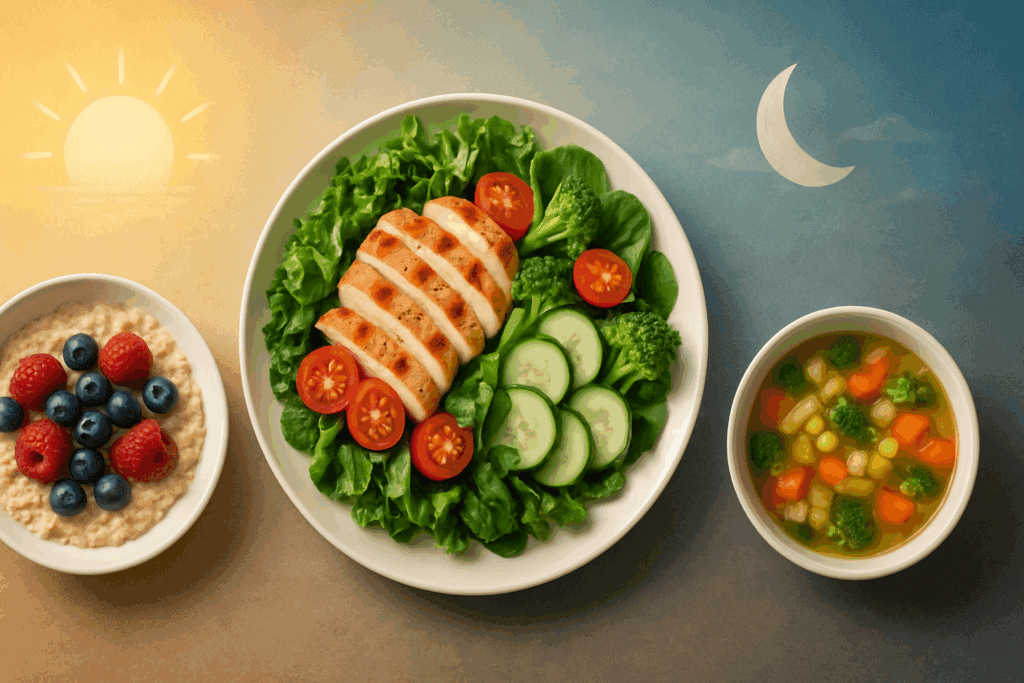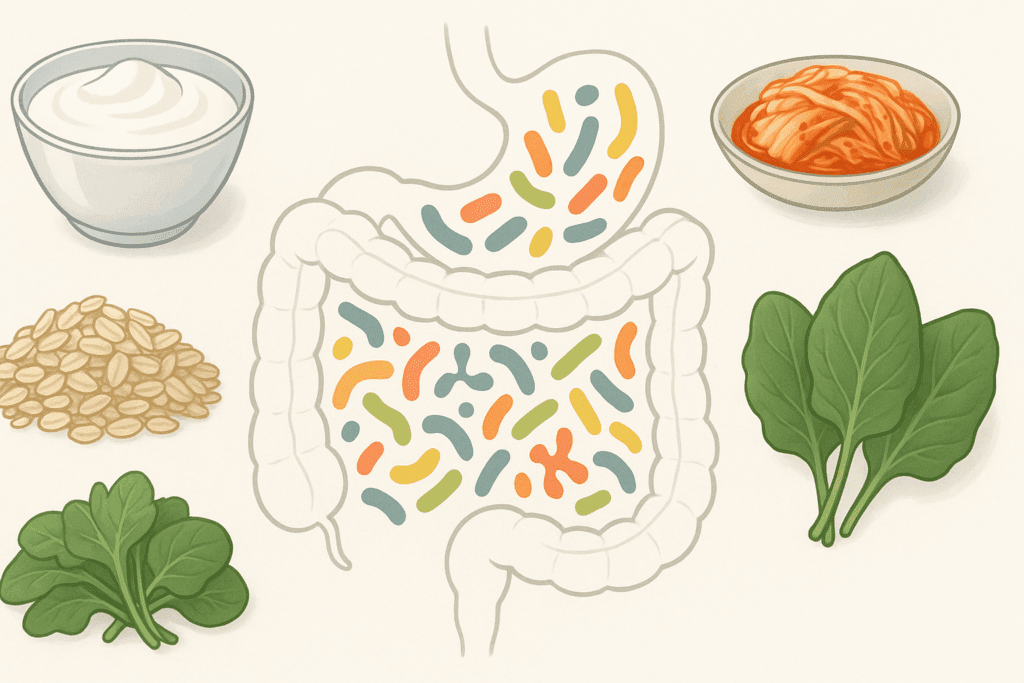Understanding the Foundations of Safe and Effective Weight Loss
The desire to learn how to lose weight in 7 days safely is not just a matter of aesthetics—it often reflects a broader goal of achieving better health, vitality, and self-confidence. However, short-term weight loss goals must be approached with care, scientific grounding, and a clear understanding of how the body responds to nutritional and metabolic changes. Rapid weight reduction is possible, but not all methods are safe, and not all outcomes are sustainable. The key lies in identifying strategies that encourage healthy, doctor-approved weight loss without compromising physical or psychological well-being.
You may also like: Expert-Backed Weight Loss Tips for a Healthier Lifestyle: What You Need to Know for Long-Term Weight Control and Wellness
Incorporating evidence-based dietary choices, physical activity, hydration, and sleep hygiene allows individuals to explore how to get skinny naturally while respecting the body’s needs. Though many fad diets promise drastic weight loss methods that lead to rapid results, they often come with risks such as muscle loss, nutrient deficiencies, or rebound weight gain. Instead, experts emphasize nutrient-dense foods, realistic goals, and metabolic balance.
This article explores how to become skinny and feel healthier by focusing on proven strategies supported by medical research and nutrition science. Whether you want to lose weight in a month or you’re determined to jumpstart your progress within a single week, this guide provides a comprehensive, safe, and actionable roadmap rooted in expert guidance.

How Nutritional Timing and Food Choices Accelerate Healthy Weight Loss
One of the most effective ways to initiate weight loss in seven days is to modify your food intake strategically, focusing on both what and when you eat. Metabolic studies reveal that aligning your meals with your circadian rhythm—eating more earlier in the day and reducing intake in the evening—can enhance insulin sensitivity and promote fat oxidation. This means that the timing of meals directly supports how to lose weight fast in 2 weeks and even within one week.
When exploring foods to eat while trying to lose weight, prioritizing whole foods with high fiber and protein content is essential. These foods not only support satiety but also reduce the likelihood of overeating. For example, incorporating leafy greens, lean protein, and whole grains helps regulate blood glucose and reduce cravings, making it easier to maintain a calorie deficit without feeling deprived.
For women seeking specific foods to eat for weight loss, hormonal balance also plays a role. Fluctuating estrogen levels can impact fat storage, especially in the abdominal region. Choosing anti-inflammatory foods that help regulate cortisol—like salmon, avocado, and berries—can support weight reduction more effectively. Among the most effective foods to encourage weight loss are those rich in omega-3 fatty acids, soluble fiber, and plant-based polyphenols, which collectively support both fat metabolism and digestive health.

The Science Behind a 7-Day Weight Loss Strategy
To successfully lose weight in 2 weeks or less, you must understand the mechanisms that influence short-term fat loss. Initial weight reduction typically comes from a combination of fat, water, and glycogen depletion. A well-structured 7-day program should therefore aim to optimize these variables without pushing the body into stress-induced breakdown.
One of the easiest ways to lose weight in a short timeframe is to cut back on refined carbohydrates, which hold water in the body and contribute to bloating. This strategy reduces insulin levels and prompts the kidneys to expel excess sodium and water, leading to a noticeable decrease in weight within a few days. However, this must be balanced with adequate intake of potassium-rich foods to avoid electrolyte imbalance.
If you’re wondering how to lose weight fast in 1 day, keep in mind that short-term results are largely water-based and not reflective of lasting fat loss. Yet such results can be motivating and help set the stage for more sustainable change. Adding foods that help u lose weight—such as high-fiber vegetables, green tea, and fermented foods—can also enhance digestion and reduce inflammation, contributing to visible results by the end of a week.

Why Hydration and Sleep Are Critical in Getting Skinny Naturally
While diet often takes center stage, hydration and sleep are foundational to any effort to get thinner. Dehydration can trigger hunger signals, reduce metabolic efficiency, and impair exercise performance. In contrast, consistent fluid intake supports thermogenesis—the body’s ability to burn calories through heat production—and flushes out metabolic waste.
Sleep plays a similarly pivotal role. During deep sleep, the body balances hormones that influence appetite, including ghrelin and leptin. Poor sleep increases cravings for high-calorie foods and decreases willpower, which is why improving sleep hygiene is a lesser-known but effective method for how to get skinny really fast. Aiming for seven to nine hours of uninterrupted sleep per night can substantially support your goal to lose weight in 2 months or sooner.
A simple yet impactful trick is to drink water before meals, which promotes satiety and reduces total calorie intake. Infusing water with lemon, cucumber, or mint can also provide a mild diuretic effect and enhance the body’s ability to shed excess water weight safely and naturally.

Effective Exercise Strategies That Accelerate Fat Loss in One Week
Though nutrition drives the majority of short-term weight loss, physical activity provides the metabolic push needed to accelerate results. When you’re exploring how to get skinny quick, incorporating a mix of cardio and strength training is vital. High-intensity interval training (HIIT), for example, increases post-exercise oxygen consumption and enhances fat oxidation for hours after a workout ends.
For those new to fitness or returning after a break, brisk walking, bodyweight circuits, or light resistance training can all be effective ways to stimulate muscle engagement without risking injury. Muscle preservation is key, especially during rapid weight reduction, as lean mass helps maintain a higher resting metabolic rate.
Individuals who want to lose weight in two months can build on these habits by gradually increasing intensity and duration. Pairing workouts with foods that will help you lose weight—such as bananas for glycogen replenishment or eggs for protein synthesis—ensures that energy is sustained and muscle recovery is supported.
What Fruits Help You Lose Weight and Why They Matter
Many people wonder what fruits help you lose weight, especially when trying to follow a cleaner, more natural diet. Fruits like grapefruit, apples, and berries offer a unique blend of fiber, water, and antioxidants that not only curb appetite but support gut health and insulin regulation. This makes them ideal options for those wondering how to lose weight in 7 days safely.
Apples contain pectin, a type of soluble fiber that slows digestion and prolongs feelings of fullness. Berries, such as blueberries and raspberries, are rich in polyphenols that may reduce fat accumulation and support metabolic function. Meanwhile, grapefruit has been studied for its ability to enhance fat metabolism and lower blood sugar spikes after meals.
Eating these fruits before or with meals can reduce overall caloric intake without triggering energy crashes. They also serve as healthy alternatives to processed snacks, offering a natural way to get thin without relying on artificial supplements or extreme dieting practices.

The Role of Gut Health in Weight Loss and Metabolic Function
An emerging area of research reveals that the gut microbiome plays a critical role in regulating body weight, hunger hormones, and nutrient absorption. This makes gut health an often overlooked factor when people try to find the easiest way to lose weight or understand how to become skinny in a way that feels effortless.
Consuming probiotic-rich foods like kefir, Greek yogurt, and kimchi helps restore microbial diversity, which may reduce inflammation and enhance the efficiency of fat metabolism. Additionally, prebiotic fibers found in asparagus, onions, and oats feed healthy gut bacteria, creating a feedback loop that reduces cravings and balances energy levels.
This microbiome-friendly approach is particularly important for women, as studies suggest female hormones influence gut composition more significantly than in men. For those focusing on foods to eat for weight loss women, pairing probiotics with nutrient-dense, fiber-rich vegetables offers a dual benefit: improved digestion and better fat utilization.
Avoiding Common Pitfalls and Misconceptions About Rapid Weight Loss
While it’s tempting to embrace drastic weight loss methods for immediate gratification, many such practices carry unintended consequences. Skipping meals, relying on detox teas, or adopting extreme calorie deficits may produce short-term results but often lead to muscle loss, mood disturbances, and long-term weight regain.
Understanding what foods can make you lose weight and what foods to avoid is essential to prevent common dieting mistakes. Overly restrictive diets may lead to binge episodes or nutritional deficiencies, especially if they eliminate entire food groups like healthy fats or complex carbohydrates.
A more balanced approach involves selecting foods that boost weight loss while ensuring nutrient diversity. This includes legumes, whole grains, lean proteins, and healthy fats, which together support sustainable fat burning without compromising health. When you ensure you lose 5 lbs a week through proper nutrition and movement rather than starvation, you set yourself up for lasting success rather than yo-yo dieting.

Strategic Meal Planning for Rapid, Sustainable Results
Creating a simple yet strategic meal plan for the week can make a significant difference when exploring how to get skinny naturally and quickly. The goal is to achieve a moderate caloric deficit while maximizing nutrient intake. This involves eating regular meals and snacks that contain fiber, protein, and healthy fats to regulate blood sugar and prevent energy dips.
A sample day might begin with oatmeal topped with chia seeds and berries, followed by a lunch of quinoa and grilled chicken with mixed greens, and a dinner of salmon with roasted Brussels sprouts. Including 5 foods to eat to lose weight—like eggs, almonds, leafy greens, beans, and apples—helps you stay satisfied and nourished.
Meal timing is just as important as food quality. Avoiding late-night eating, spacing meals evenly, and drinking water throughout the day contribute to optimal digestion and fat mobilization. These practices not only help you lose weight in 2 weeks but also train your body to maintain a leaner composition over time.
Psychological Resilience and Motivation: The Mind-Body Link in Weight Loss
No weight loss journey is complete without addressing the psychological side of the equation. Motivation, consistency, and mindset are critical in understanding how to lose weight fast in 2 weeks or longer. People often underestimate the importance of behavior change, habit tracking, and emotional resilience in achieving physical transformation.
Developing a growth mindset, where setbacks are viewed as opportunities to learn rather than failures, fosters persistence. Journaling meals, setting non-scale goals, and celebrating small victories can help reinforce positive behavior. Many individuals find that by focusing on how to get thinner for health reasons—not just aesthetics—they gain more meaningful and lasting motivation.
Integrating mindfulness practices like meditation, breathing exercises, or mindful eating can reduce stress-induced eating patterns and support hormonal stability. These techniques align with a natural approach to how to get skinny really fast without burning out or feeling overwhelmed.
Frequently Asked Questions (FAQ): How to Lose Weight in 7 Days Safely
1. Can you actually learn how to lose weight in 7 days without harming your metabolism? Yes, but it requires a strategic and medically sound approach. The key lies in optimizing nutrient density and meal timing to support fat metabolism without triggering the body’s survival response. Many people searching for how to lose weight in 7 days are drawn to drastic weight loss methods, but sustainable results come from metabolic alignment, not extreme calorie cutting. By incorporating the easiest way to lose weight—a combination of whole foods, sleep hygiene, and moderate exercise—you can safely see measurable changes. Keep in mind, preserving muscle mass is crucial to avoiding long-term metabolic slowdown, especially when trying to get skinny quickly.
2. What are some lesser-known foods that help you get skinny naturally? While many already know about berries and leafy greens, fermented vegetables like kimchi and sauerkraut are powerful foods that help u lose weight by supporting gut microbiota and reducing inflammation. Jerusalem artichokes and leeks are rich in prebiotic fiber, feeding beneficial bacteria that influence appetite hormones. For those wondering what foods can make you lose weight efficiently, these microbiome boosters are often overlooked. They work particularly well in synergy with lean proteins and polyphenol-rich fruits, supporting those looking for how to get skinny really fast without relying on supplements. Including such foods daily enhances the body’s ability to burn fat and feel full longer.
3. Is it possible to lose weight in a month and keep it off permanently? Absolutely, but the focus must be on behavior change and consistency rather than on scale-based goals alone. Many attempt to lose weight in a month using unsustainable diets, only to regain the weight once habits revert. The better question to ask might be how to become skinny and stay that way through sustainable routines. This involves eating foods that boost weight loss while maintaining hormonal balance, particularly for women navigating fluctuating metabolic demands. Tracking trends over time—such as sleep patterns, emotional eating triggers, and hydration levels—provides deeper insight than short-term calorie tracking alone.
4. What fruits help you lose weight and support hormone health in women? Fruits like kiwi, pears, and cherries are excellent for women aiming to reduce belly fat while supporting estrogen balance. These fruits contain unique compounds that regulate inflammation and improve insulin sensitivity—key drivers of abdominal fat accumulation. While many search for what fruits help you lose weight in general, women benefit most from options that manage hormonal shifts. When integrated into a diet focused on foods to eat for weight loss women, these fruits reduce sugar cravings and promote more even energy levels. Their fiber also helps with satiety, improving portion control naturally over time.
5. Can I lose weight in 2 weeks if I work out daily and change my diet? Yes, and this approach is particularly effective when exercise and nutrition are designed to complement each other. If you want to lose weight in 2 weeks, combining resistance training with low-glycemic meals can accelerate fat loss while preserving muscle. It’s also important to fuel workouts with foods to eat while trying to lose weight—such as complex carbs and protein—rather than severely restricting calories. Understanding how to lose weight fast in 2 weeks also means factoring in recovery time and sleep quality. Daily movement doesn’t always mean intense workouts; walking, stretching, and mobility work are equally vital for metabolic efficiency.
6. How do I know if my rapid weight reduction is healthy or risky? Rapid weight reduction is only healthy when it results from balanced eating, appropriate caloric deficits, and mindful exercise. Warning signs include fatigue, dizziness, mood swings, and muscle loss—all indicators you may be losing more than just fat. When pursuing how to get skinny really fast, it’s easy to fall into the trap of undernourishment. A safe path always includes an abundance of foods that will help you lose weight, not just eliminate calories. Prioritize nutrient density and avoid plans that completely exclude major food groups or promise miracle results overnight.
7. Are there psychological techniques that make it easier to get skinny and stay motivated? Yes, habit stacking and visualization are two effective psychological tools for staying on track. People learning how to get skinny often underestimate the importance of mindset and emotional regulation. Anchoring a new behavior (like drinking water) to an existing habit (like brushing your teeth) creates automatic routines. Similarly, visualizing how to be skinny not just physically, but emotionally and socially, helps ground motivation in identity rather than just appearance. Combining these tools with foods to encourage weight loss enhances both compliance and long-term satisfaction.
8. What are the best strategies for how to get thinner without compromising muscle mass? Preserving lean muscle while burning fat is essential when pursuing how to get thinner, and this requires adequate protein, resistance training, and sleep. Too often, people chasing how to get skinny quick slash calories too drastically and skip strength workouts, which leads to muscle breakdown. Instead, aim to include high-protein foods to eat when trying to lose weight—like eggs, tempeh, and chicken breast—at every meal. Pair that with compound strength movements and enough rest days, and your body will prioritize fat loss over muscle wasting. Keeping protein intake consistent also stabilizes appetite, helping you feel fuller with fewer calories.
9. How can I ensure I lose 5 lbs a week without hurting my health? To ensure you lose 5 lbs a week safely, the strategy must go beyond calorie reduction and include hormone, hydration, and gut health management. Incorporate 5 foods to eat to lose weight consistently throughout the day, and avoid skipping meals, which can trigger cortisol spikes. Those learning how to lose weight fast in 1 day often overlook the compounding effects of daily consistency. Try limiting processed foods while increasing water intake, managing stress, and exercising strategically (not excessively). Tracking progress through energy levels, mood, and sleep quality—not just weight—offers a more holistic view of your success.
10. What’s the most overlooked but effective way to lose weight in two months? The most overlooked tool for those trying to lose weight in 2 months is social accountability. Whether it’s a fitness buddy, a dietitian, or a digital tracker, having a support system reinforces commitment and helps break through mental roadblocks. Many people focus solely on how to lose weight in two months through diet, forgetting that consistent support changes outcomes dramatically. Sharing goals makes it easier to stay committed to foods that boost weight loss and discourage self-sabotaging behaviors. Combining community with proven foods to eat for weight loss women (like flaxseed, lentils, and arugula) enhances both motivation and metabolic response.
Final Thoughts: How to Lose Weight in 7 Days Safely and Sustainably
Achieving noticeable weight loss in seven days is possible when approached with medically sound strategies, nutrient-rich foods, and realistic expectations. The journey is not about punishing the body with extreme restrictions but learning how to nourish it in ways that support fat loss, energy, and metabolic balance. When you focus on foods that help you lose weight—especially high-fiber fruits, lean proteins, and gut-friendly ingredients—you create a foundation for lasting success.
Whether your goal is to lose weight in a month, two months, or begin by exploring how to get skinny in one week, your results will reflect the quality of your habits, not just the intensity of your efforts. By aligning nutrition, sleep, hydration, exercise, and mindset, you can achieve visible progress without compromising your health or well-being.
Remember, true transformation comes from consistency and self-compassion. Every step toward how to be skinny in a healthy way should honor your body’s needs, not work against them. And by choosing doctor-approved methods and scientifically supported foods to eat when trying to lose weight, you equip yourself with the tools to look and feel your best—naturally and sustainably.


